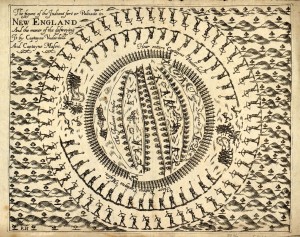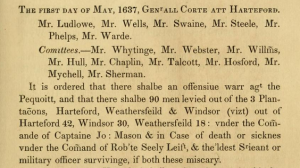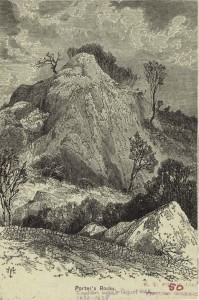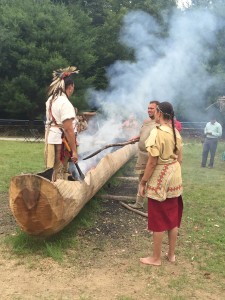Historical Research
Historical Research consists of the collection and synthesis of primary and secondary written materials. The Battlefield staff visits private, town, state and national repositories in the United States and abroad collecting all relevant information pertaining to 17th century battlefields in the American Northeast, and lifeways to understand these conflicts and the peoples living through conflict – both Native and Colonial.

An engraving by Capt. John Underhill depicting a birds-eyes view of the Battle of Mistick Fort, May 26, 1637.
Primary materials that we consult are published accounts or manuscripts of the actual participants of the battles or observing civilians. Other invaluable resources are the collections gathered and authored by contemporary historians such as Increase Mather and William Hubbard of Massachusetts Bay Colony.

May 1 Declaration of the Pequot War. Page lifted from the “Public Records of the Colony of Connecticut” edited by J. H. Trumbull.
Secondary materials published by later historians offer new interpretations, and sometimes family stories on the unfolding events of the Pequot War. These sources offer a new perspective and occasionally offer new leads to find other relevant collections and publications.

Sketch of the Porter’s Rocks outcroppings and campsite from the “Popular History of the United States 1876”
Likewise, oral histories from both Native and Colonial ancestors provide insight into the events of the Pequot War. Oral traditions provide us a rich glimpse into the memorialization of these events, and open up the opportunity for community dialog and education.




